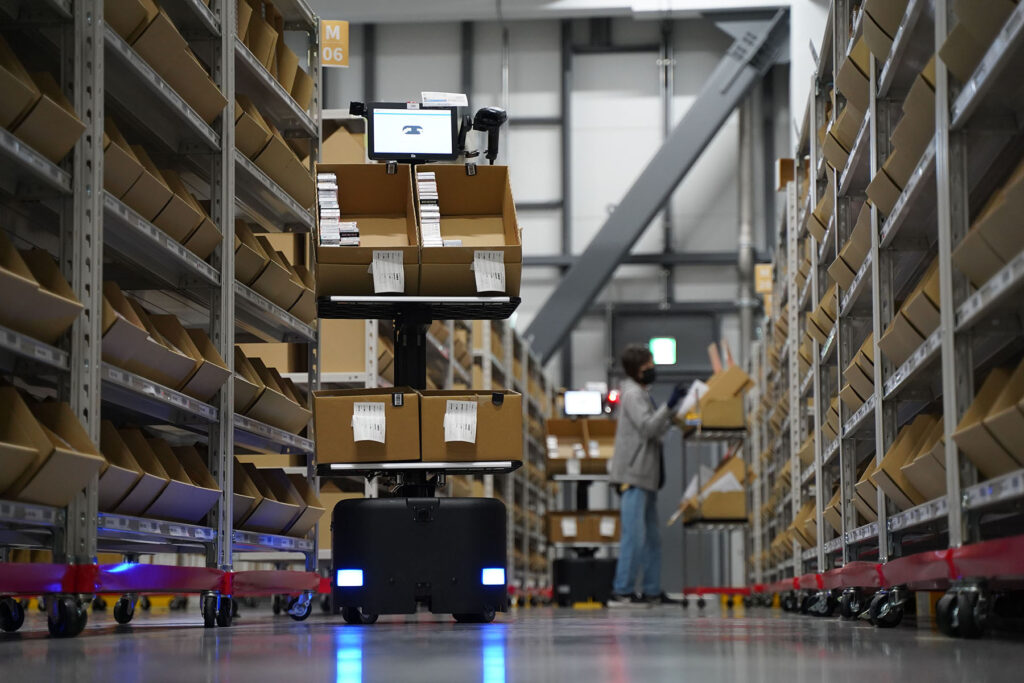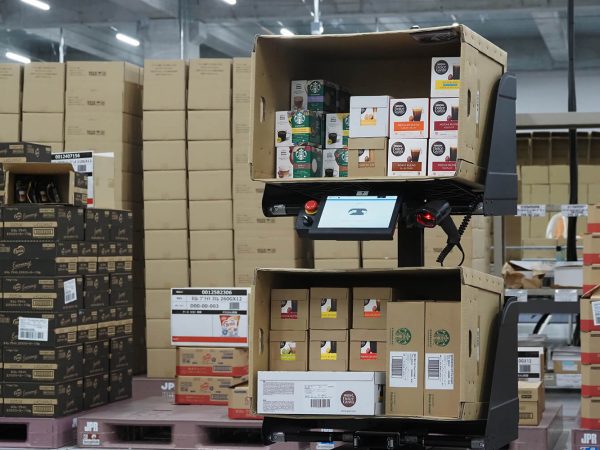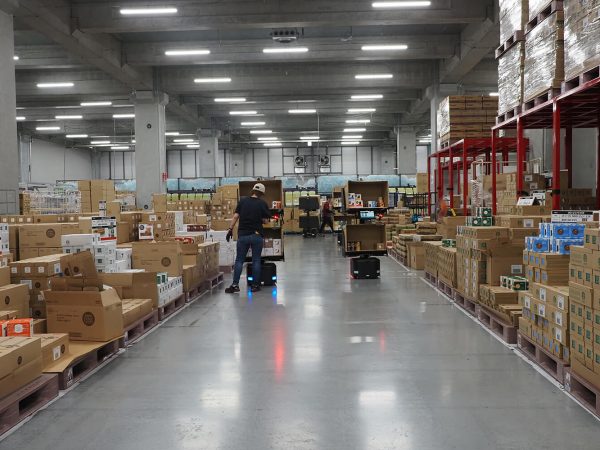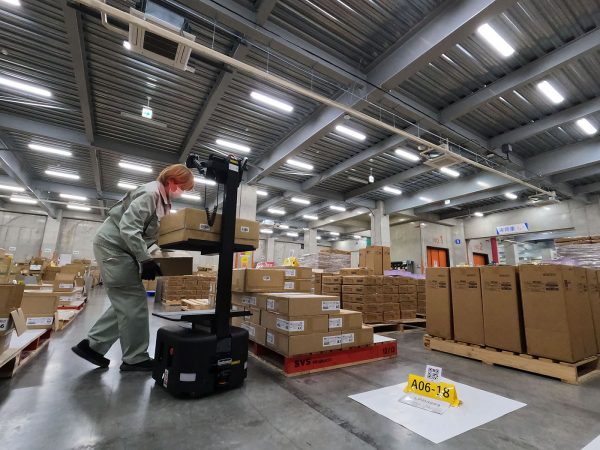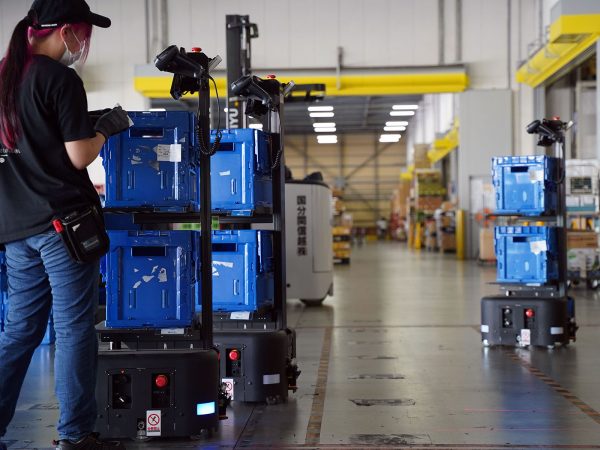Aiming for Japan’s Most Worker-Friendly Warehouse through Collaborative Work with Robots! Hybrid Operation of AMR and Human Workforce Supporting a Warehouse with a Wide Variety of Products.
For those exploring the use of collaborative robots to enhance warehouse logistics, real-world case studies from organizations that have already undertaken such implementations can provide crucial insights. In this article, we will delve into the practical application of Rapyuta PA-AMR, highlighting its actual effects through detailed interviews with the involved personnel.

Rise UP Inc.
Logistics Chiba Center 1
Industry: E-commerce & Wholesale
Number of Units installed: 15 units
AMR Operation Date: January 2023 –
This article presents a case study of the logistics center operated by Rise UP Inc., which specializes in the online sale and wholesale distribution of contact lenses. The company has recently adopted the “Rapyuta PA-AMR” technology in its logistics operations. Rise UP Inc. primarily focuses on business-to-business (B2B) sales, distributing both colored and clear contact lenses to retail outlets. For them, maintaining a stable supply chain is essential for continuous business operations, necessitating the upkeep of approximately 40,000 SKUs and lots at all times.
The logistics center, established only two and a half years ago, initially employed manual multi-cart picking using warehouse management systems (WMS) and handheld terminals.We conducted interviews with key personnel involved in the project, from the planning to the implementation stages, to discuss the integration of the Rapyuta PA-AMR and its operational impact. They described existing challenges due to a decreasing recruitment rate, which fell to just 50% of its original level, threatening the stability of their business operations. In response, the company implemented 15 Autonomous Mobile Robots (AMRs), leading to a marked increase in productivity and efficiency while retaining their existing cart picking processes.
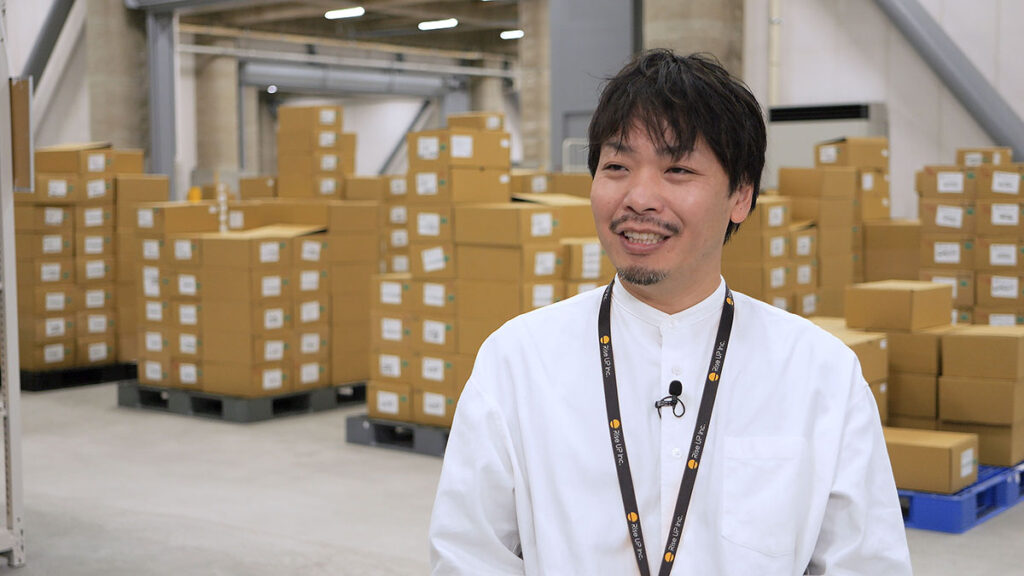
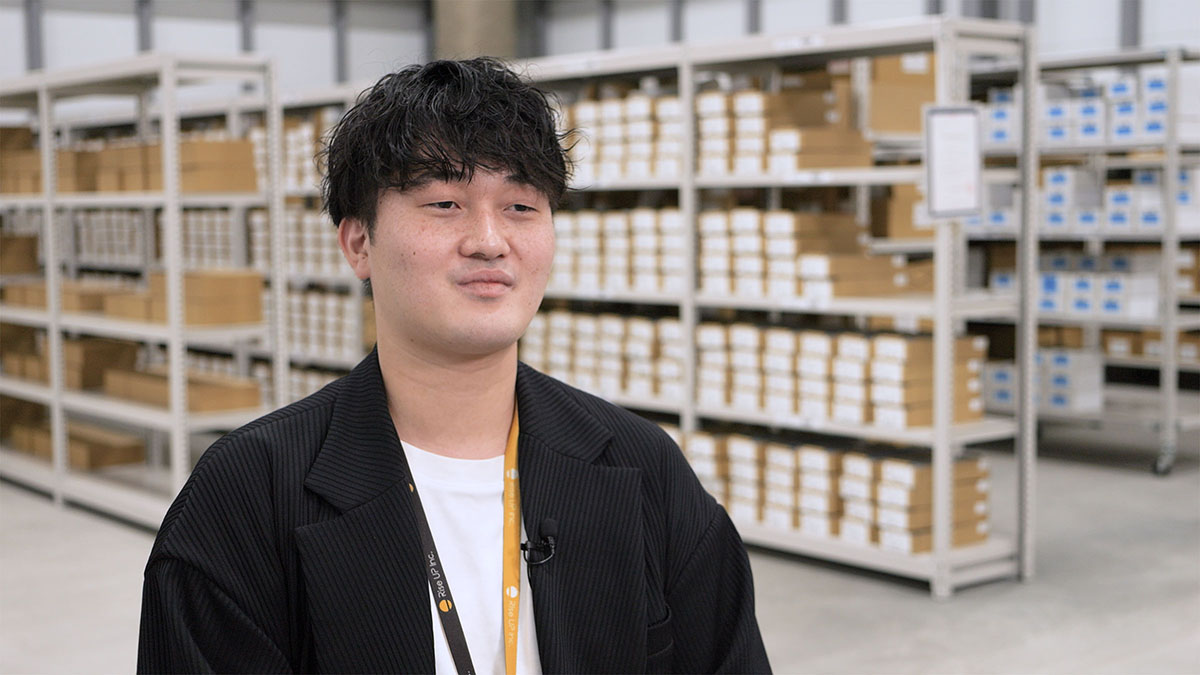
Mr. Yoshikazu Nishihara (top photo) – Executive Officer, Logistics Division, Rise UP Inc.
Mr. Yoshiki Takeshita (bottom photo) – AMR Implementation Project Leader, Logistics Division, Rise UP Inc.
Index
- Characteristics of the logistics center
- Background for considering automated equipment
- Reasons and process for introducing Rapyuta PA-AMR
- Traditional picking method
- Unique requirements requested at the time of implementation
- On-site reactions
- Staff training
- Unique efforts made during the operation of the system
- Comparison of productivity before and after the introduction of Rapyuta PA-AMR
- Cost performance before and after implementation
- Rapyuta’s support system
- New insights gained from AMR introduction
- Ideal warehouse environments for AMRs
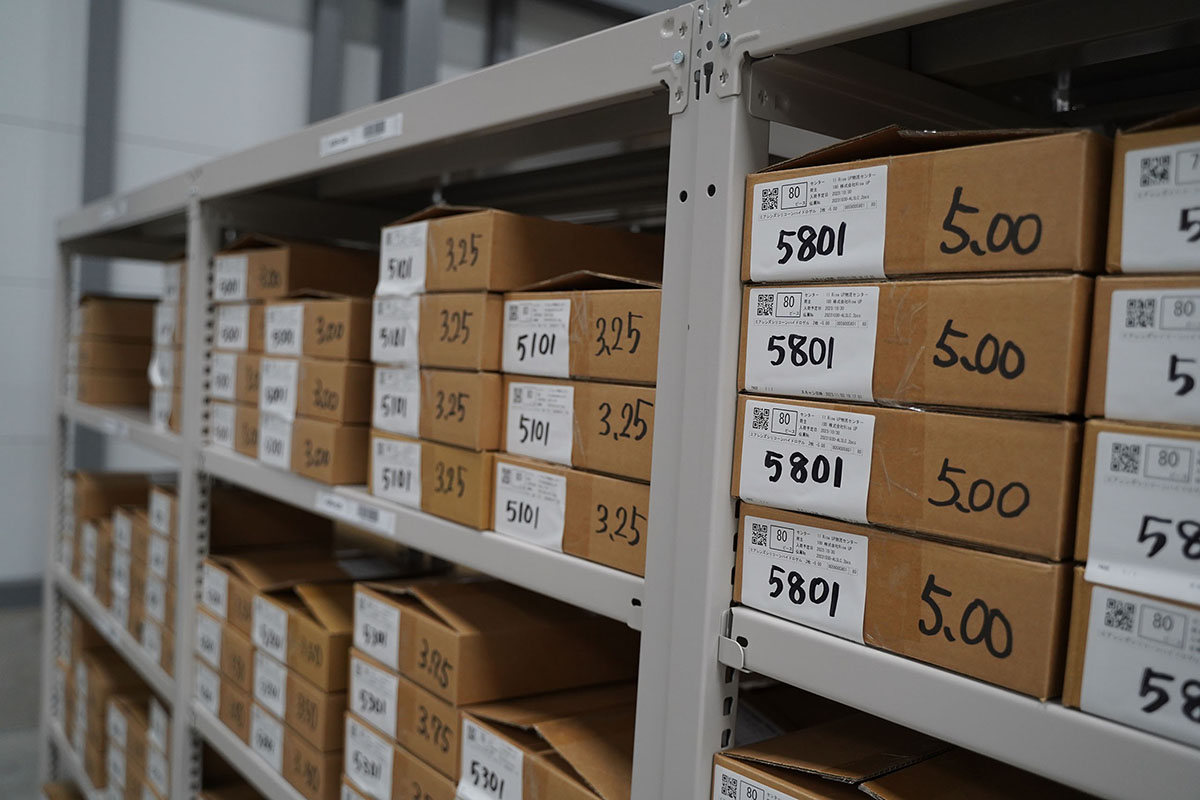
Q. What are the main items handled at this center and what are some of the characteristics of the operation?
Mr. Nishihara: This warehouse primarily serves BtoB operations for retail. Our main products include contact lenses and contact lens care items. With each SKU distinguished by brand, color, and prescription, we manage an extensive inventory of 40,000 SKUs throughout the center. Additionally, we handle various batches, requiring strict adherence to the first-in, first-out (FIFO) principle. Our storage strategy prioritizes efficiency, employing a free location system.
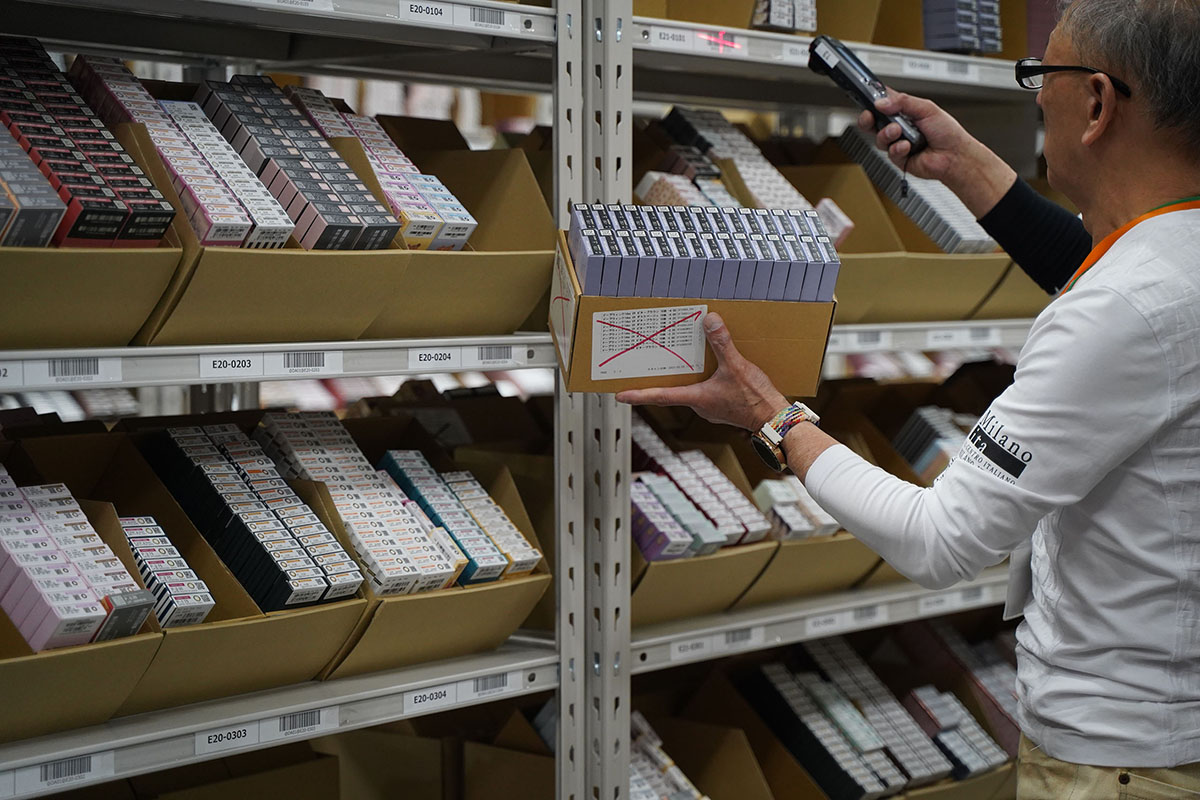
Q. Could you tell us the background behind your company’s decision to introduce automated equipment in your logistics operations?
Mr. Nishihara: Two and a half years ago, when this center was established, we initiated handheld picking using a Warehouse Management System (WMS) and achieved high levels of productivity and quality. However, as a business primarily focused on sales rather than logistics, ensuring a “stable supply” was essential for maintaining service to our customers and, ultimately, for sustaining our business operations.
Particularly, with the declining employment rates in the vicinity of our Chiba center—which had dropped by about 50% since its inception. We recognized the need to streamline and automate processes to continue providing our services effectively. This realization significantly drove our decision to implement automation. While our handheld picking operations were productive, it became crucial to reduce our dependency on individual skills in the long run to address this organizational challenge.

Q. What options were available for addressing the challenges? And what were the non-negotiable key requirements?
Mr. Nishihara: Initially, we explored the possibility of implementing a fully automated warehouse. However, considering the high number of small items handled, we concluded that “manual picking is faster” when taking into account factors such as the number of SKUs and scan frequencies. Even considering our objectives, a fully automated warehouse was projected to be incompatible with our products and would lead to decreased productivity.
Especially due to the nature of medical equipment, ensuring traceability of lot numbers was necessary. This required scanning two-dimensional codes containing a lot of information, with special handling and processing required for scan responsiveness and accuracy.
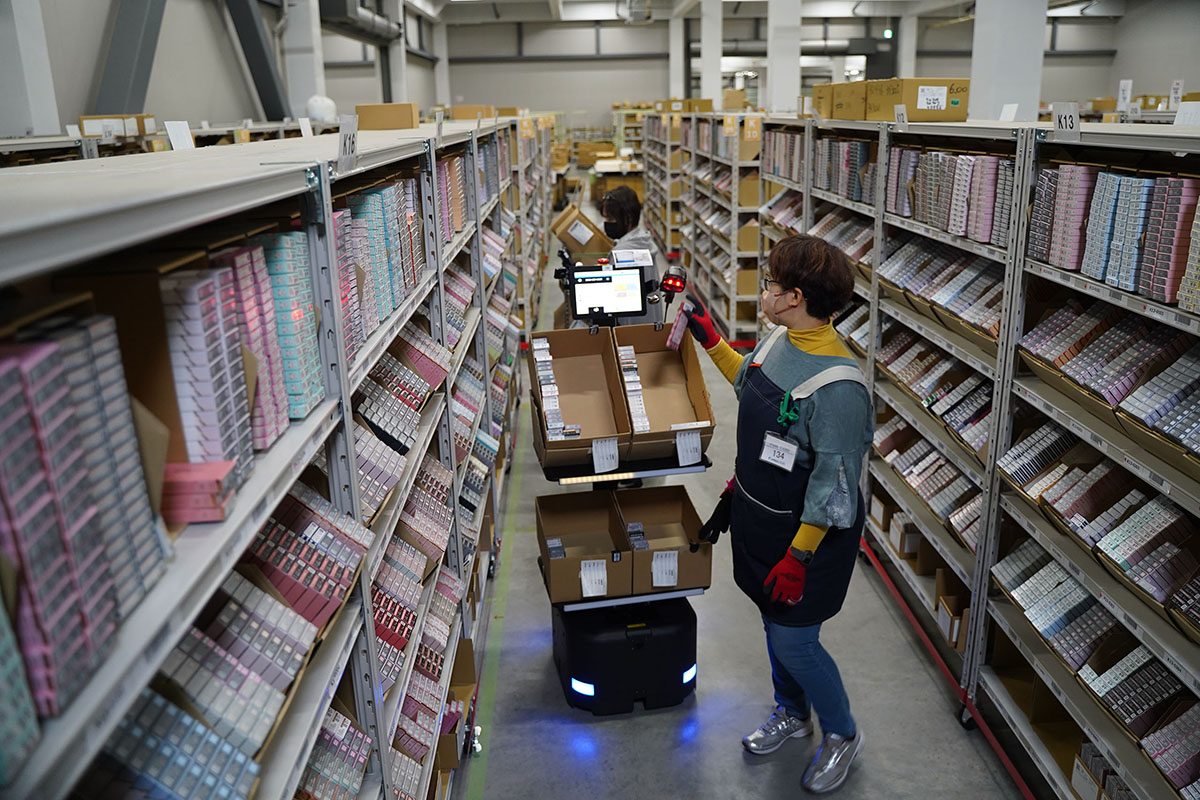
Q. Could you please tell us about the background and reasons for ultimately deciding on Rapyuta Robotics’ AMR?
Mr. Nishihara: When considering options other than automated warehouses, we had the opportunity to interact with various companies’ AMRs at international logistics exhibitions. Upon experiencing them firsthand, we felt that they could be a good fit for our operations. Subsequently, through trials and assessments, we realized that AMRs could seamlessly integrate into our existing workflows without significant changes, enabling our operators to adapt quickly and avoid major disruptions. While our productivity was already quite high with handheld picking, adopting AMRs revealed the potential for even greater productivity gains.
At first, all AMRs from different companies seemed quite similar. However, as we delved deeper into discussions with Rapyuta, we began to see some key differences. Importing AMR systems from overseas often entails a fixed method and logic, which may not adapt flexibly to on-site challenges. Rapyuta, on the other hand, systematically addressed issues encountered in domestic operations during their implementation process, leveraging their unique logic developed through this experience in AMR development. We felt their strength lay in their focus on “real-world productivity improvement” from the perspective of actual operational sites. Another factor was Rapyuta’s prioritization of speed and their passionate work ethic, which resonated well with our company culture. We shared a common goal of problem-solving, growth, and striving for the highest levels of productivity worldwide. It was the alignment of these ambitious objectives that sealed the deal.
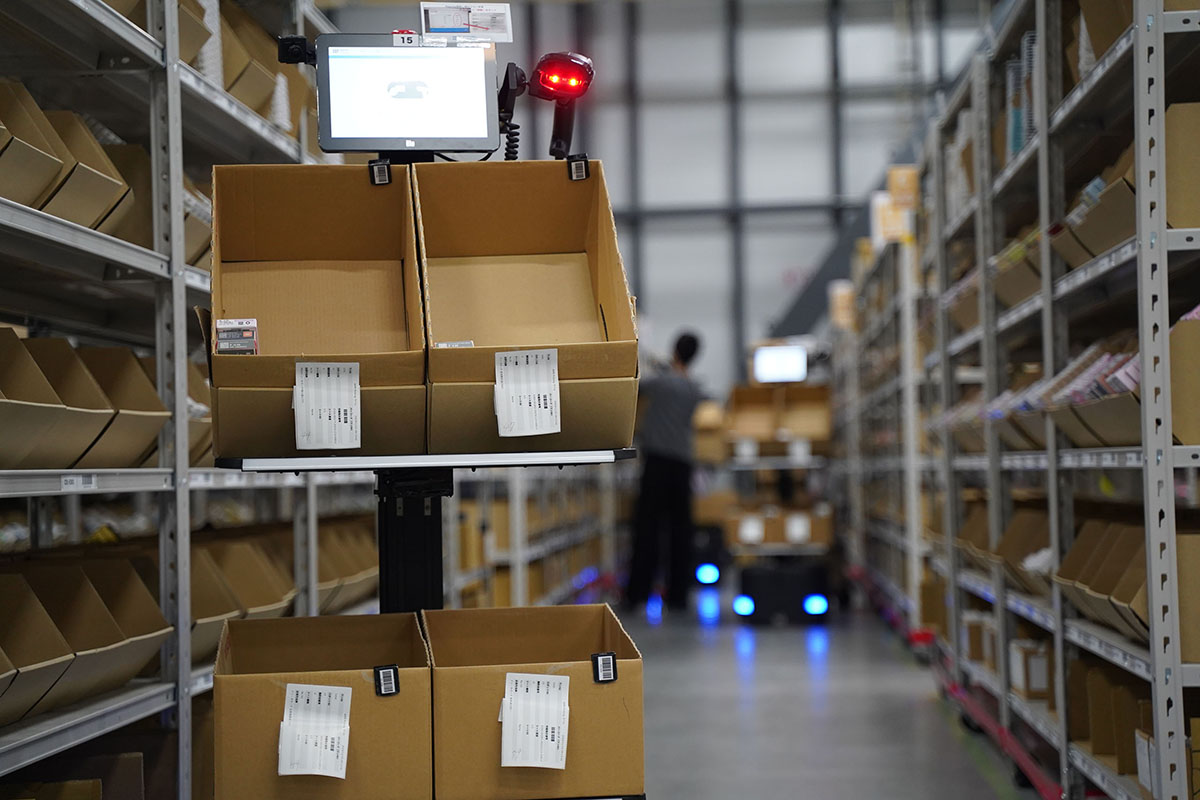
Q. What was the previous picking method at the center?
Mr. Takeshita: Multi-order picking using handheld terminals integrated with the WMS.
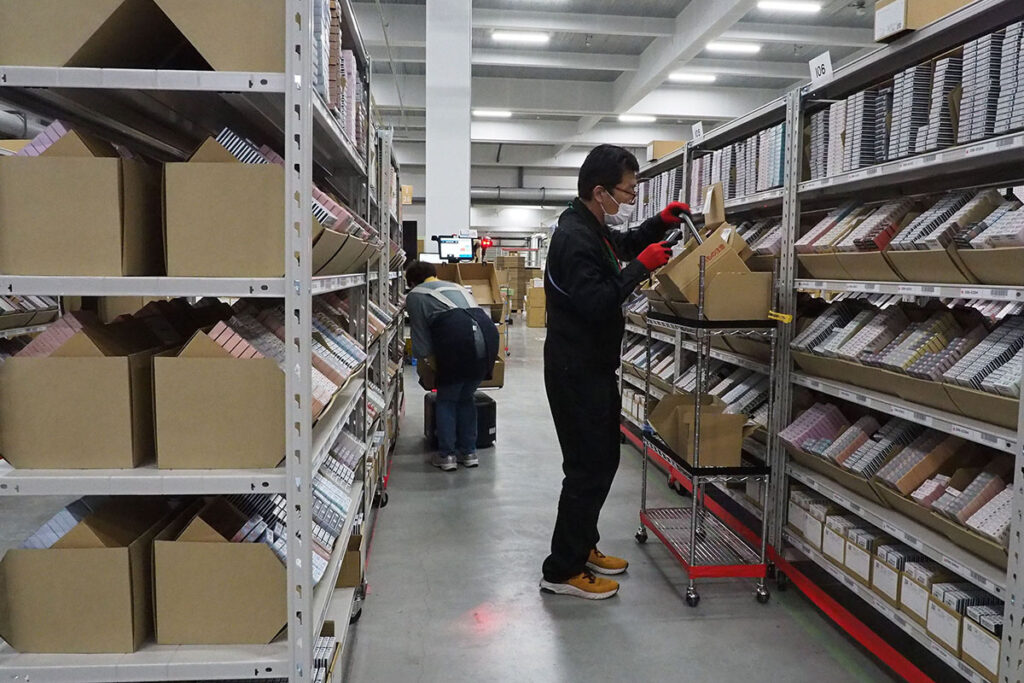
Q. Were there any specific requests or unique needs during the preparation for implementing Rapyuta PA-AMR?
Mr. Takeshita: Due to the nature of our products, we handle a large variety of items, totaling 40,000 SKUs, with shipments often comprising detailed batches. During testing, we encountered issues with the AMR’s inability to handle the significant increase in shipping data on certain days, caused by the high number of data rows. Rapyuta was faced with such a data-intensive scenario for the first time, but they promptly initiated modifications, resolving the issue within about a month. Subsequently, they upgraded the system to handle high data volumes during peak hours/days, ensuring seamless integration. In connection with this, on the WMS side, we implemented API functionality and added screens to determine the data for integration with Rapyuta’s dashboard. Conversely, on Rapyuta’s system side, they made individual modifications to accept our mechanism for identifying products based on the data within QR codes that we use.
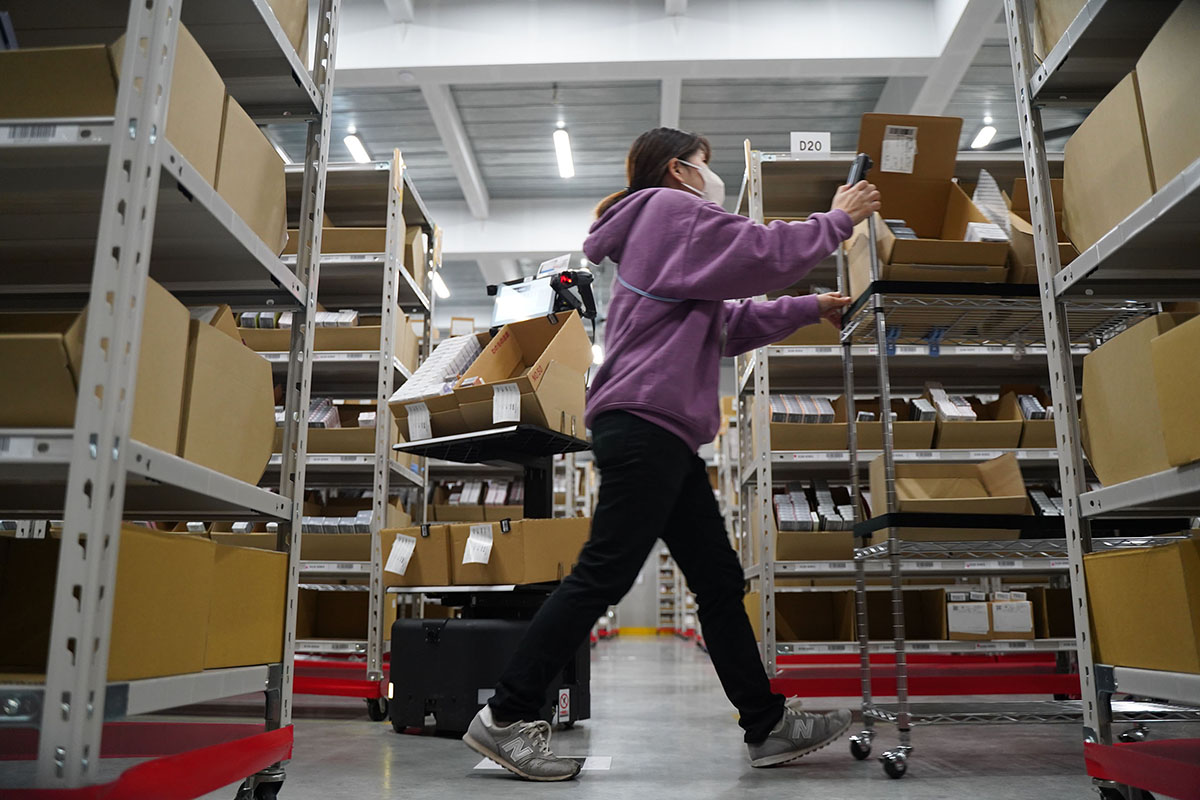
Q. From the preparation for AMR implementation to the acceptance by the on-site staff, could you share any feedback or impressions from the staff on-site?
Mr. Takeshita: Initially, everyone was a bit apprehensive, thinking, “Here comes something new!” (laughs). Since handheld cart picking had been the norm until then, it was natural for them to be surprised. However, once they started operating it, they realized that the transition was smooth. They could continue the picking tasks as before, using the same four totes, and the operation was simple. Overall, it was accepted without much resistance.
During the pre-operation preparation, we had initially planned for operations with shelf spacing of 1200mm, consistent with handheld operations. However, when we actually tested with multiple AMRs, we found that some areas were a bit tight for them to pass each other. Therefore, considering that the minimum width for one Rapyuta PA-AMR to pass is 900mm, we adjusted the layout to 1600mm between shelves to ensure smooth passage between AMRs.
Therefore, considering that the minimum width for one Rapyuta PA-AMR to pass is 900mm, we adjusted the layout to 1600mm between shelves to ensure smooth passage between AMRs.
In terms of operation, we noticed significant fluctuations in the number of pieces shipped depending on the day of the week, especially with a higher volume of orders at the beginning of the week. Therefore, alongside AMR operations, we retained the option for traditional handheld picking to manage these fluctuations effectively.
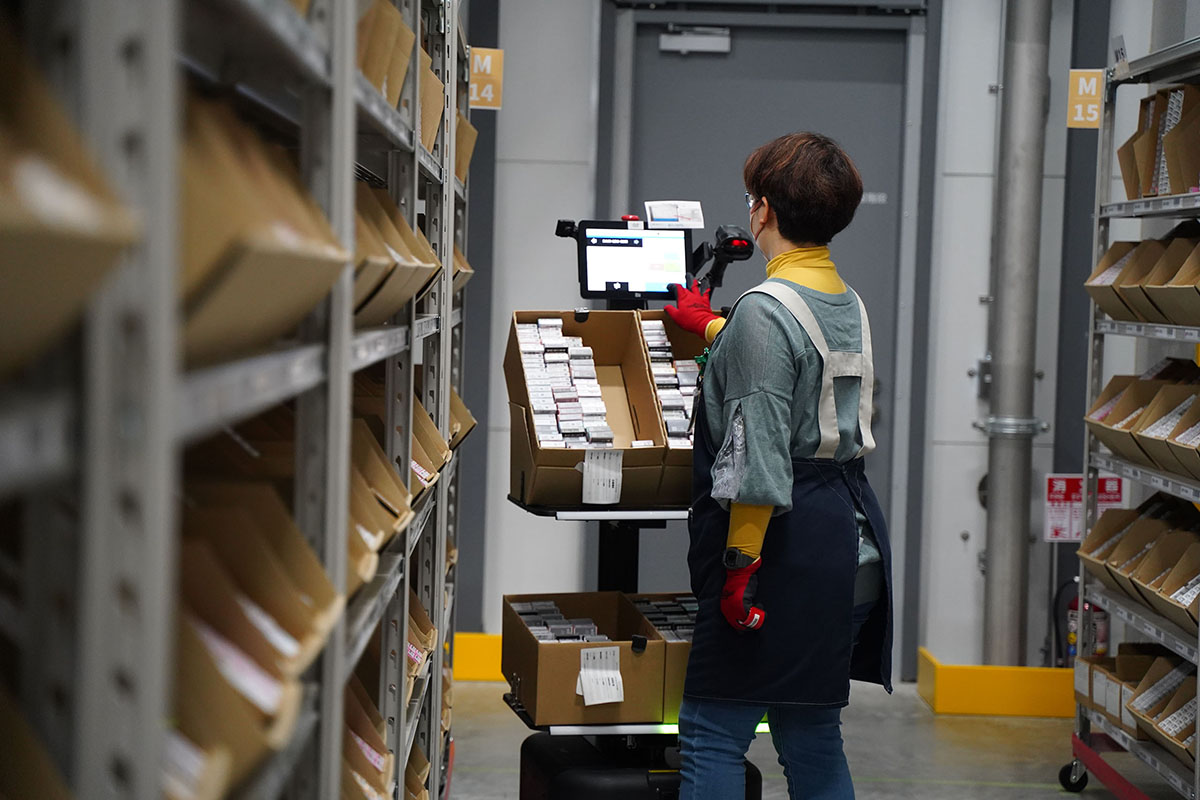
Q. Could you please describe how training was conducted for the on-site staff?
Mr. Takeshita: Initially, the picking staff underwent initial training conducted by Rapyuta’s Customer Success (CS) team, where they were introduced to the series of operations. Subsequently, we conducted on-the-job training (OJT) while limiting the daily order volume handled by the AMRs, gradually increasing the number of operators. It took about two months for all the on-site staff to gain hands-on experience with collaborative operations. During this process, we gradually increased the order volume handled by the AMRs.
Since this center has a significant number of temporary staff, even those who were new to the environment found the operations and workflow easy to grasp. Previously, they used to roam around the warehouse with handheld devices, but now, they move around imagining themselves crossing paths with the AMRs. Consequently, the walking distance has been significantly reduced, leading to a noticeable reduction in fatigue at the end of the day.
Moreover, during cart operations, they couldn’t leave until they completed their assigned orders, making it difficult for them to take breaks or attend to emergency tasks midway. However, with AMRs managing the progress and ensuring no orders are missed, it’s now easier for them to take breaks or join midway. This liberation from carts and handheld devices has lightened their mental burden significantly.
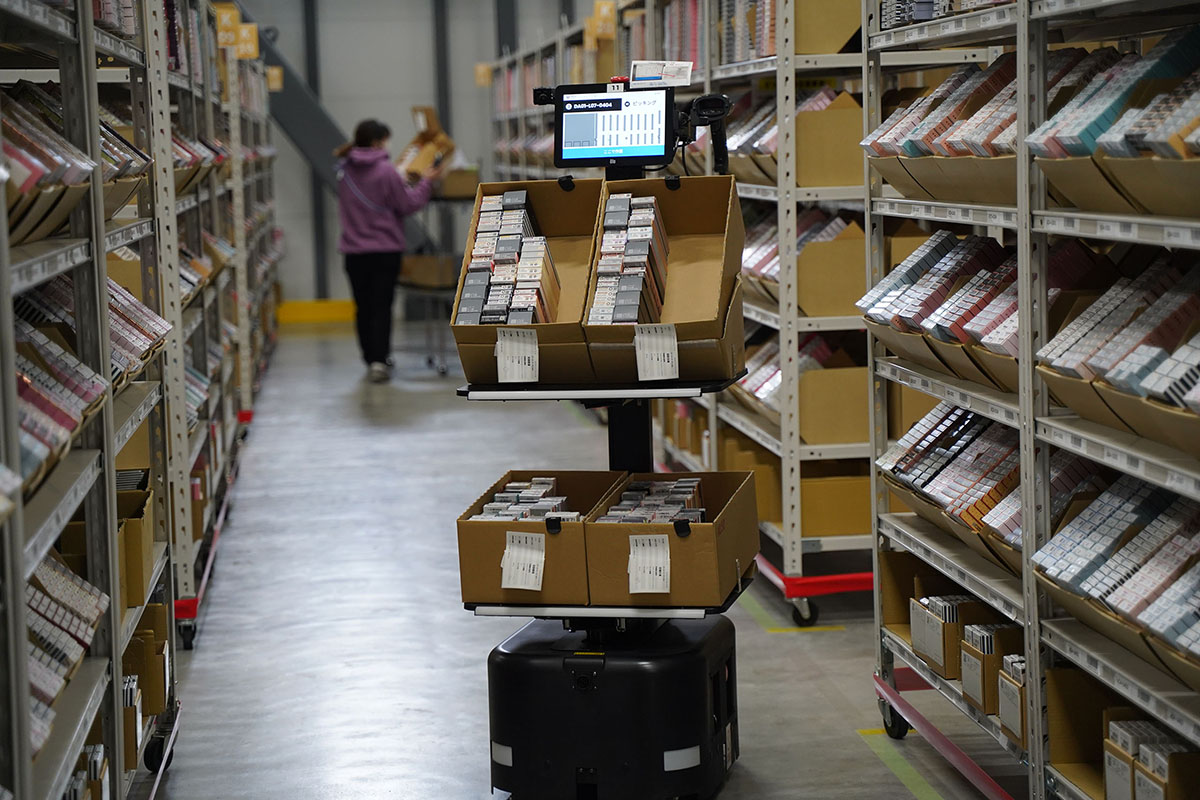
Q. Could you share any unique initiatives implemented in the operation after the introduction of AMRs?
Mr. Takeshita: One recent initiative we’ve implemented is the staff ID authentication with the AMRs before picking tasks. Initially, I was skeptical about it being an unnecessary extra step, but once we started, we realized the value of having detailed data on who did what and when. As a manager, this allows me to evaluate staff performance accurately, recognizing exceptional efforts and addressing any areas for improvement promptly. The best part is, it doesn’t require complex analysis; the report results are generated by the end of the day, allowing the operational team to review them and approach the staff with feedback before the next day’s operations. It’s simple and speedy—this “easy data-driven” approach has proven to be quite effective.
Q. How does the productivity after the AMR implementation compare with the results from the pre-implementation simulations?
Mr. Takeshita: Previously, we experienced fluctuations in picking speeds, sometimes faster, sometimes slower. By analyzing AMR movements and various data points, we can now pinpoint where bottlenecks occur. This ability to identify detailed improvement areas and analyze data enables us to initiate improvements on a small scale more easily.
In terms of numbers, the actual productivity has far exceeded our initial expectations. Currently, we’ve set even higher goals to strive for and are continuously analyzing and improving to reach them.
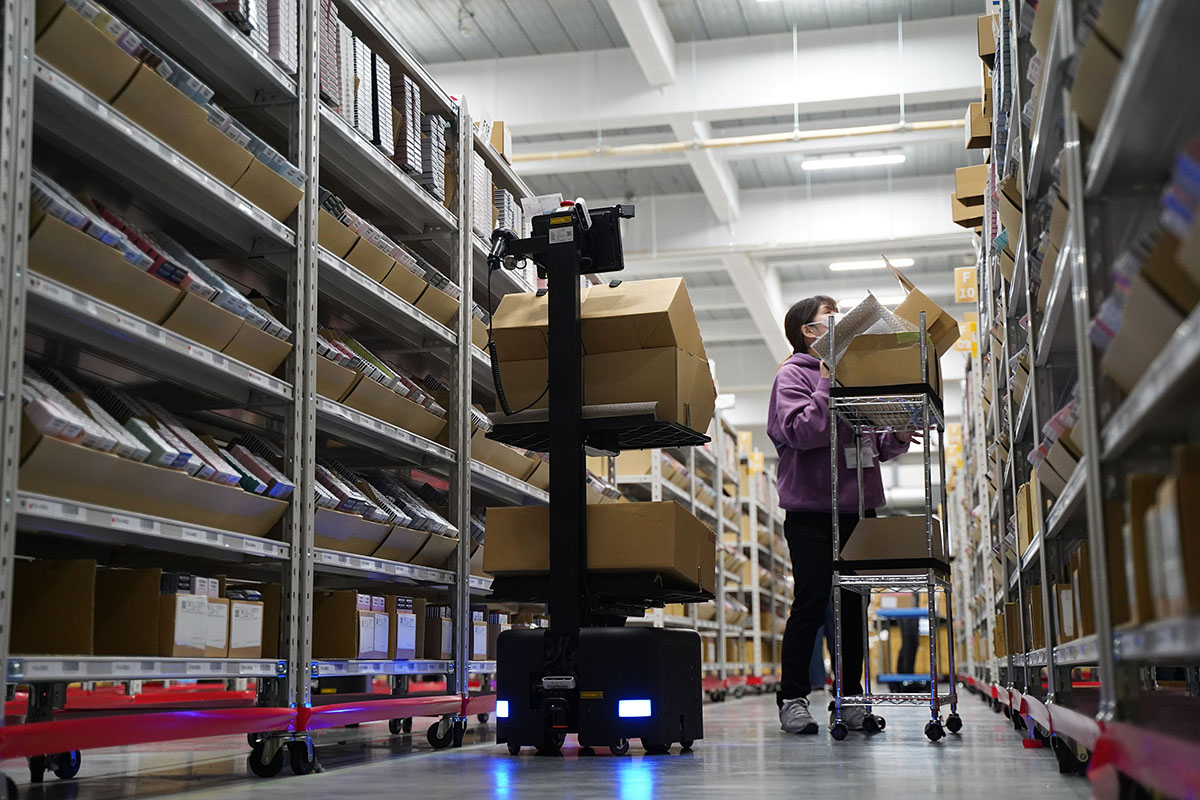
Q. Have you noticed any differences in the “smoothness of the implementation” and the “cost-effectiveness” associated with the business?
Mr. Takeshita: I must say, the implementation process went remarkably smoothly. While we encountered some challenges during the adjustment phase to integrate with our existing WMS, the CS team and implementation staff were incredibly supportive, guiding us forward with positivity. Thanks to their proactive assistance, we were able to maintain an active approach, focusing on our objectives throughout. The implementation stayed right on track without any delays, and given the early signs of cost-effectiveness, I’m quite satisfied with the overall cost-effectiveness.
Mr. Nishihara: In the two months following implementation, we’ve continuously fine-tuned the system, adjusting factors like AMR wait times. For us, throughput has been the primary focus rather than momentary productivity spikes. Witnessing a gradual increase in total shipments has been particularly encouraging. Moreover, while it’s somewhat unconventional in AMR deployments, we’ve adopted a hybrid approach, utilizing both AMRs and handheld picking. It took some trial and error to find the right balance, but successfully integrating these methods has led to even greater cost-effectiveness.
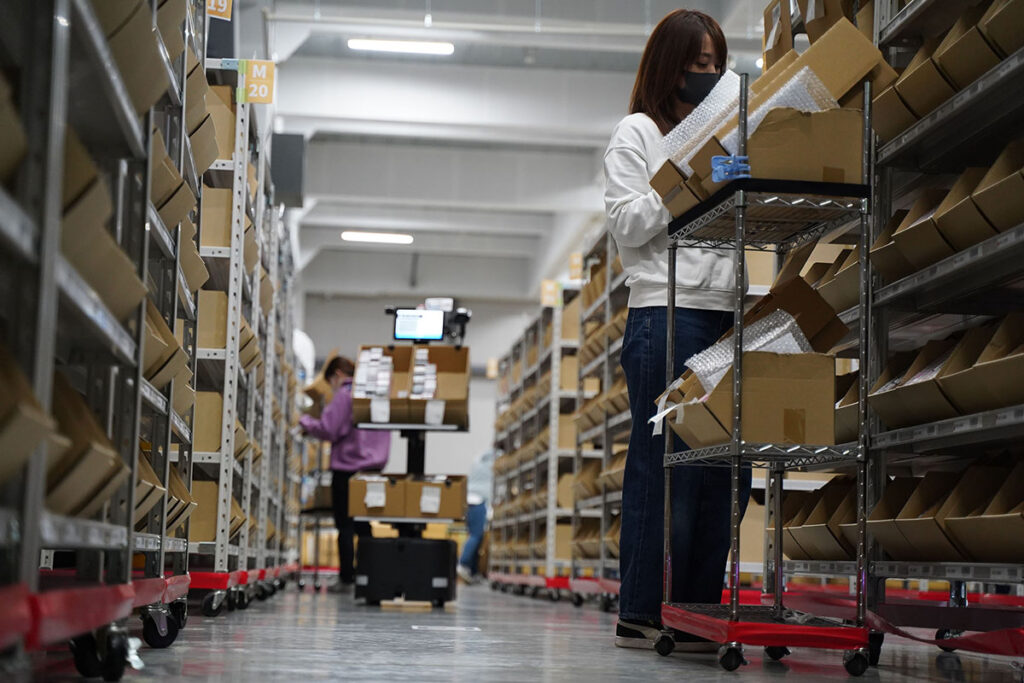
Q. How effective was the “visualization of data” obtained through Customer Success reports and data dashboards after implementation?
Mr. Nishihara: The visualization of data, especially concerning AMR operations alongside handheld picking, has been highly effective. Daily monitoring of dashboard data enables us to quickly identify any issues and implement improvements promptly. Additionally, the detailed reports provided by the Customer Success team have been instrumental in refining our operations. Our perspectives on the data differ from those of Rapyuta’s CS staff. However, weekly discussions where we align our viewpoints and goals based on clear numerical data have been helpful in driving results.
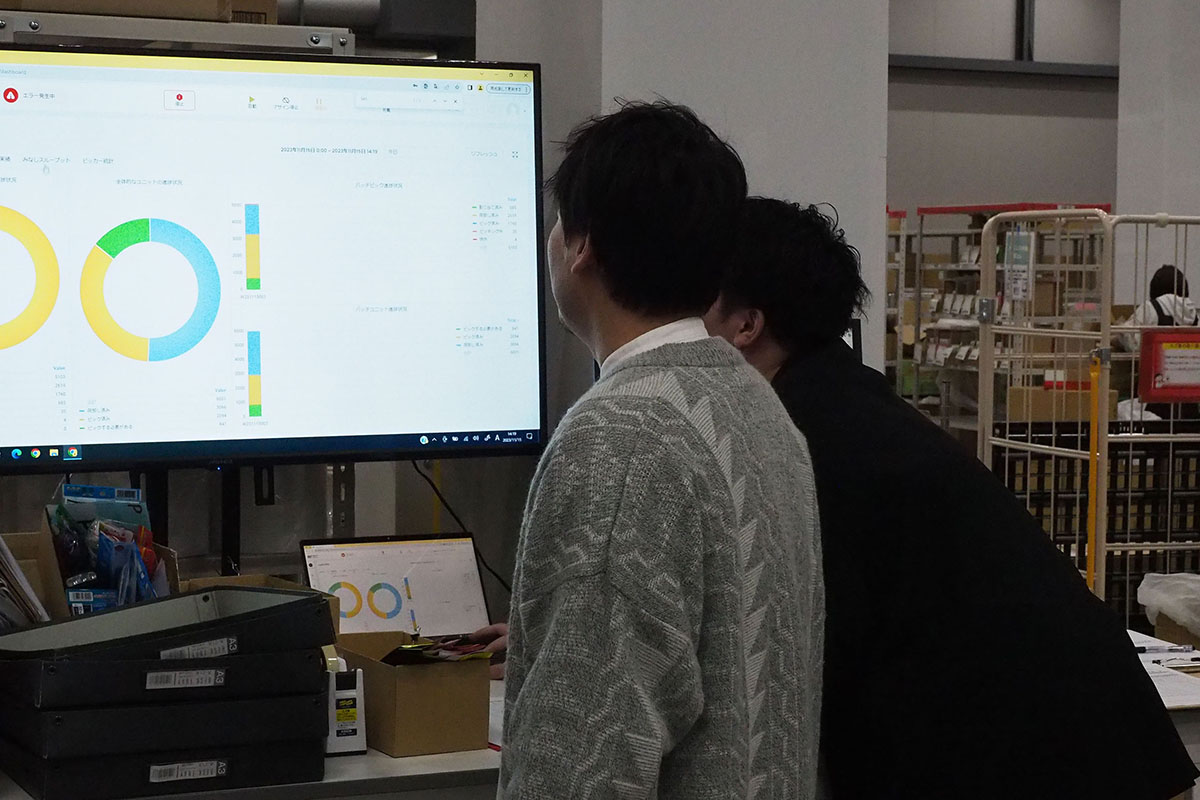
Q. What kind of support did you receive from Rapyuta Robotics?
Mr. Takeshita: We had numerous requests, but what was really great was that we could always have constructive conversations. Depending on the scale of system modifications, we typically received responses by the following week or the week after in our regular meetings.
Moreover, even for relatively minor issues like when one AMR stopped working, the CS team was quick to respond and assist, which was incredibly helpful.
Since our goal isn’t just achieving productivity targets but constantly striving for improvement, we’re always in a state of refinement. Having the CS team on-site during the initial two months after implementation was particularly beneficial.
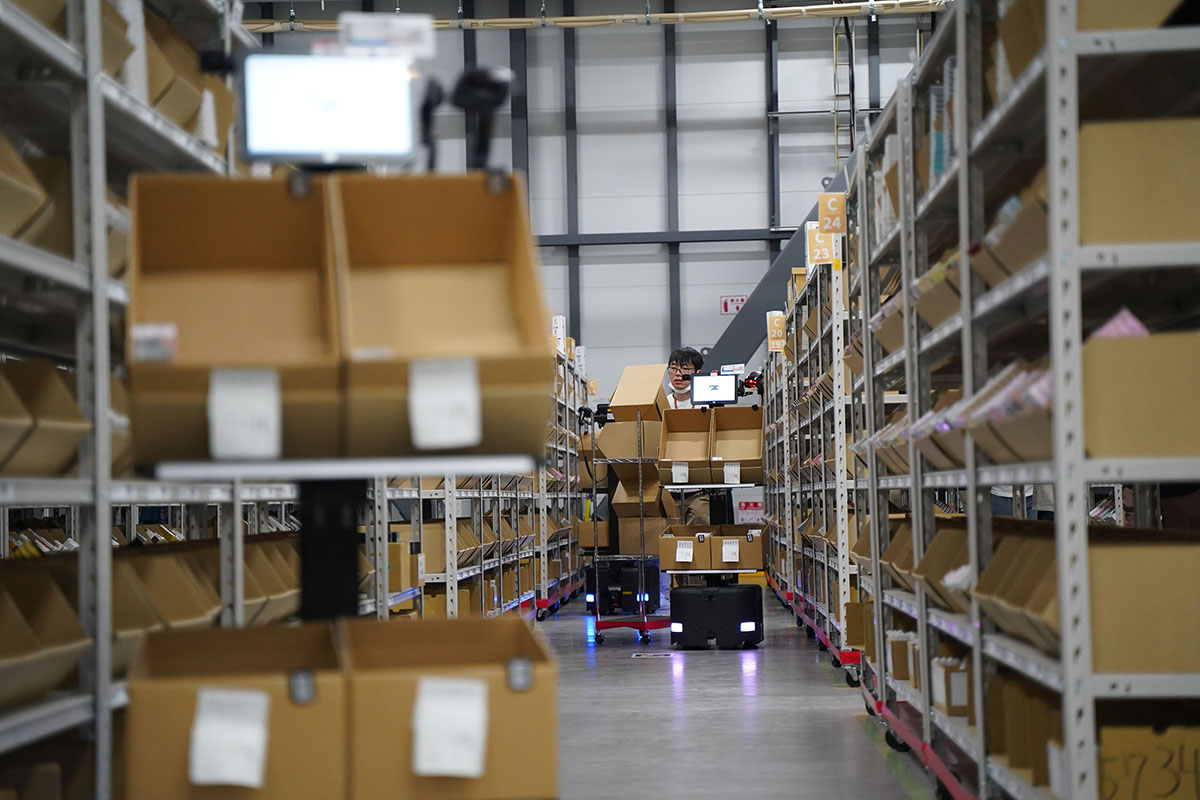
Q. Did implementing AMRs lead to any new insights?
Mr. Nishihara: The slogan I’ve been advocating is “Realizing the most worker-friendly warehouse in Japan.” It’s actually quite embarrassing to say that in front of everyone (laughs). Nonetheless, I continue to emphasize it, and I’ve realized that AMRs are a tool to achieve that goal.
With improved productivity from AMRs, we can reduce overtime, enhance work-life balance, and have more physical energy to work. As a result, it leads to a perception of “this is a comfortable place to work,” which I believe increases the likelihood of more newcomers choosing our workplace.
This is my personal belief, but I believe that when products are packed in a warehouse and delivered to customers, they also carry with them “the vitality of the workplace and the state of mind of the staff.” Creating a work environment that is comfortable with the use of AMRs contributes to generating the “mental space” necessary for each of us to properly engage with customers. I feel that our collaboration with AMRs can validate this perspective.
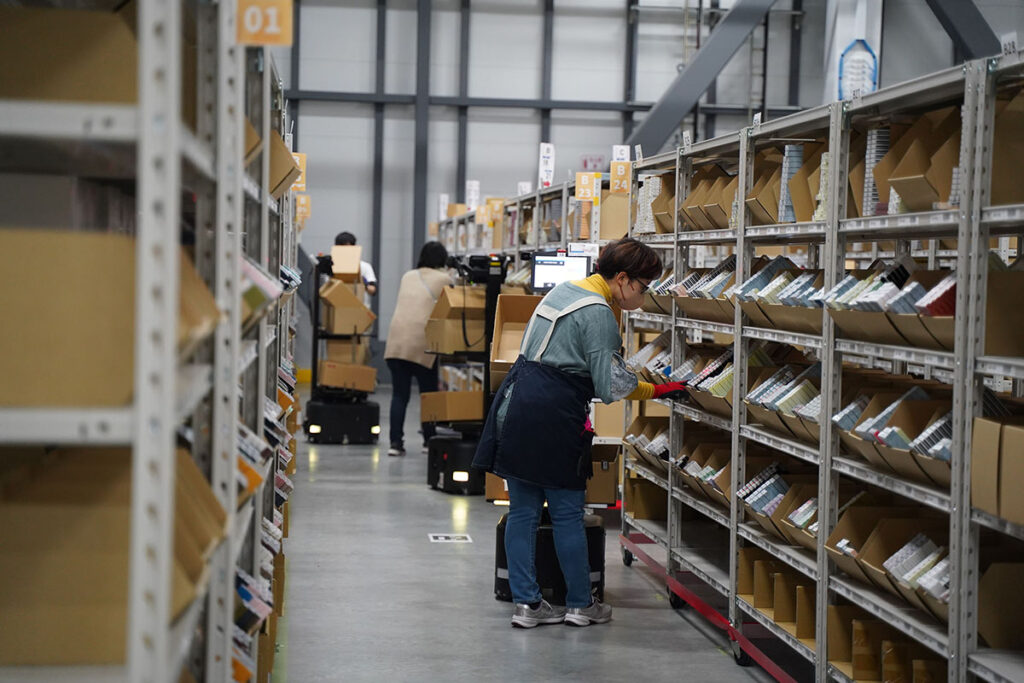
Q. From your experience with implementation, could you provide three factors that indicate a warehouse environment suitable for AMR utilization?
Point 1: In warehouses where collaborative robots are utilized, it’s essential for humans to grow alongside them, as they are not entirely autonomous. Warehouses that aim to provide growth opportunities for their human workforce by fostering flexibility in collaboration with AMRs are particularly suitable.
Point 2: Warehouses with significant gaps between experienced and new staff members are ideal for AMRs. Since AMRs operate as hub-like entities, they quickly bridge the knowledge and experience gaps. This is especially beneficial for warehouses where picking tasks require familiarity with specific products or shelves.
Point 3: Warehouses that have already taken the first step by implementing handheld devices or warehouse management systems (WMS), and are now considering AMRs as the next step, are well-suited for their adoption. In environments where basic operations are gradually becoming systematized, including staff acceptance rates, early effectiveness of AMRs seems more achievable.
